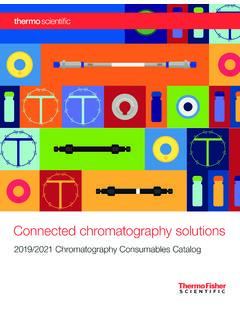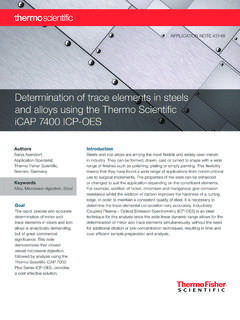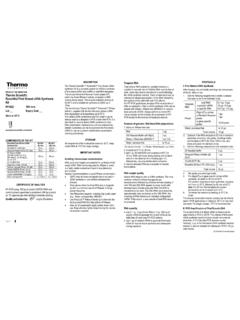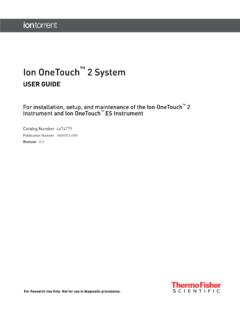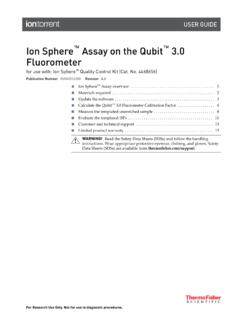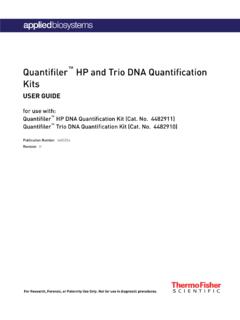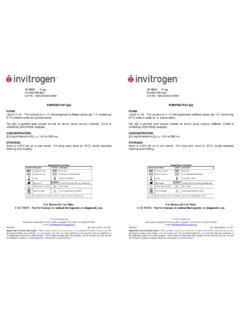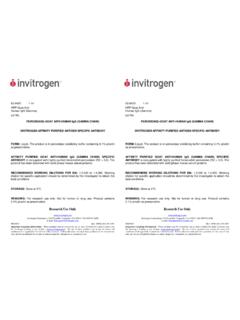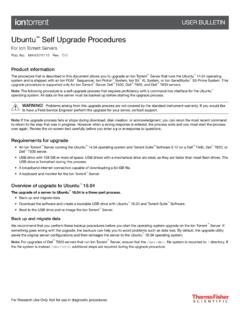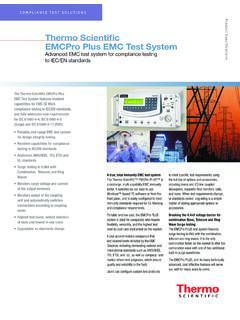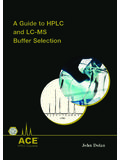Transcription of Determination of Water- and Fat-Soluble Vitamins by HPLC
1 Determination of water- and Fat-Soluble Vitamins by HPLCTECHNICAL NOTE 72488 IntroductionVitamins are a well-known group of compounds that are essential for human health and are classified into two main groups, Water- soluble and Fat-Soluble . Water- soluble Vitamins include B group Vitamins (thiamine/B1, riboflavin/B2, nicotinamide/nicotinic acid/B3, pantothenic acid/B5, pyridoxine/pyridoxal hydrochloride/B6, folic acid/B9, and cyanocobalamine/B12) and ascorbic acid (vitamin C). Fat-Soluble Vitamins include retinol (vitamin A), tocopherol (vitamin E), calciferol (vitamin D), and antihemorrhagic Vitamins (vitamin K). These Vitamins play specific and vital functions in metabolism, and their lack or excess can cause health problems.
2 The supply of Vitamins depends on diet; however, even foods that contain the necessary Vitamins can have reduced vitamin content after storage, processing, or cooking. Therefore, many people take multivitamin tablets and/or consume milk powder and vitamin-fortified beverages to supplement their diet. To ensure that these foods and tablets contain the labeled amounts of Vitamins , there needs to be a quality control assay for them. Water- soluble Vitamins are added selectively based on the average minimum daily requirement. For example, most B group Vitamins and vitamin C can be found on the label of milk powders for pregnant women and infants; also, a large amount of vitamin C is found in sports drinks.
3 Commonly added Fat-Soluble Vitamins are Vitamins A, E, D, K, and -carotene. Vitamins A and E are usually added in their acetate form and sometimes, vitamin A is added in the palmitate form. Vitamins A and E are rarely added directly. Vitamin D is added either as D3 (cholecalciferol) or D2 (ergocalciferol). Both forms are rarely added to the same Fisher ScientificKeywordsWater-Soluble Vitamins , Fat-Soluble Vitamins , Food Quality, Food Safety, Acclaim PolarAdvantage II Column, UltiMate 3000 Dual Gradient Standard hplc System 2 hplc methods for water- and Fat-Soluble vitamin analysisTraditional hplc method Reversed-phase hplc is a well-suited technique for vitamin In typical regulated hplc methods2,3 and commonly reported hplc methods,4,5 Water- soluble Vitamins are determined using an aqueous mobile phase with low-organic solvent content, whereas Fat-Soluble Vitamins are determined using organic solvent mobile phases.
4 This is due to their different solubility and reversed-phase retention properties. Commonly used buffers for the separation of Water- soluble Vitamins are phosphate, formic acid, and acetic acid. Non-aqueous reversed-phase (NARP) retention is commonly used for Fat-Soluble Vitamins so that the Vitamins are soluble throughout the analysis. A typical NARP mobile phase consists of a polar solvent (acetonitrile), a solvent with lower polarity ( , dichloromethane) to act as a solubilizer and to control retention by adjusting the solvent strength, and a third solvent with hydrogen-bonding capacity ( , methanol) to optimize hplc method There are numerous methods for the simultaneous Determination of water- and Fat-Soluble The Vitamins were separated on the Thermo Scientific Acclaim PolarAdvantage II (PA2) column with a single injection using an aqueous to non-aqueous mobile phase gradient.
5 However, due to large differences in sample preparation methods, this method is inefficient in the analysis of solid samples, such as multivitamin tablets. The sample preparation requires more than one solvent to extract both water- or Fat-Soluble Vitamins efficiently; therefore, a single injection from the sample is not method developed in the present work Based on an hplc method for the analysis of Vitamins in a dry syrup (powder mixtures that require reconstitution in water before administration), a method was tested with two injections during the same analysis (injecting the extracts for water- and Fat-Soluble Vitamins , respectively).6 This double-injection method can resolve the problem of inefficient analyses of multivitamin tablet samples; however, some strongly retained compounds from the first injection can interfere with the Fat-Soluble vitamin analysis in the second injection.
6 For example, some Fat-Soluble Vitamins , such as -carotene and acetate of vitamin A and vitamin E, were found in the extract of Water- soluble Vitamins . This problem was not observed for the Vitamins determined in the dry syrup. To avoid possible interferences with Fat-Soluble vitamin Determination , an integrated and efficient dual-mode tandem solution for the simultaneous Determination of water- and Fat-Soluble Vitamins in different types of samples, such as multivitamin tablets and beverages, was developed. In the analysis presented here, water and a mixture of dichloromethane and methanol were used for extracting water- and Fat-Soluble Vitamins , respectively. These samples were analyzed using a Thermo Scientific UltiMate 3000 Dual Gradient Standard hplc system.
7 The simultaneous Determination was completed in one sequence using the column-switching mode facilitated by the thermostatting column compartment, including valve-switching and a second injection. This process is easily controlled by the Thermo Scientific Chromeleon Chromatography Data System (CDS) software. All the analytes were seen in one chromatogram using the wavelength-switching mode. Reversed-phase hplc columns Acclaim PA, PA2, and C18 were used for the separations with an aqueous mobile phase (phosphate buf fer/CH3CN) for Water- soluble Vitamins and a non-aqueous mobile phase (CH3OH/CH3CN/methyl tert-butyl ether) for Fat-Soluble Vitamins . Detection wavelength-switching mode was applied for sensitivity optimization.
8 The proposed solution has the following advantages: The simultaneous separation of 21 water- and Fat-Soluble Vitamins can be completed within 25 min. Any interference from the first injection is eliminated. It is flexible and convenient to select suitable columns for different assay and chemical properties of water- and Fat-Soluble Vitamins and their chromatographySolubility and stability of water- and Fat-Soluble vitaminsThe physical properties of water- and Fat-Soluble Vitamins , such as solubility and stability in different solvents, are summarized in Table 1. Knowledge of these properties is important for sample preparation and analysis. Riboflavin (vitamin B2) is easily dissolved in a basic solution but is unstable,1 so its stock solution must be prepared at the time of use.
9 Freshly prepared stock solution is diluted with DI water to yield a series of riboflavin standard solutions for the calibration curve. The stability of the standard solutions was investigated. As shown in Figure 1, all three standard solutions with different concentrations, 50, 5, and 1 g/mL, had sufficient stability over 24 h. There is a small loss in peak area for the most concentrated solution. Peak area RSDs were for 5 g/mL and for 1 g/mL. The peak area RSD for the 50 g/mL solution is but includes some downward trending. These results demonstrate that the riboflavin standard solutions were sufficiently stable for preparing the calibration structures, UV spectra, and detection wavelengthsThe UV spectra of water- and Fat-Soluble Vitamins vary significantly due to their multiple structures (Figure 2) and therefore multi-wavelength detection is required for achieving the best sensitivity.
10 Usually, the maximum absorbance is the best choice, but the wavelength selected can be different because at certain wavelengths impurities may interfere with analyte detection. For example, as shown in Figure 3, impurities may interfere with the detection of vitamin B6 (peak 1) at 210 nm. Although it has more absorption at 210 nm, vitamin B6 is best detected at 280 nm where the interferences are eliminated. Another example is the detection of vitamin C. Its maximum absorption is at approximately 245 nm; however, a large amount of vitamin C is usually added to some functional waters ( , sports drinks), which may result in the concentration being outside the linear range of calibration.
